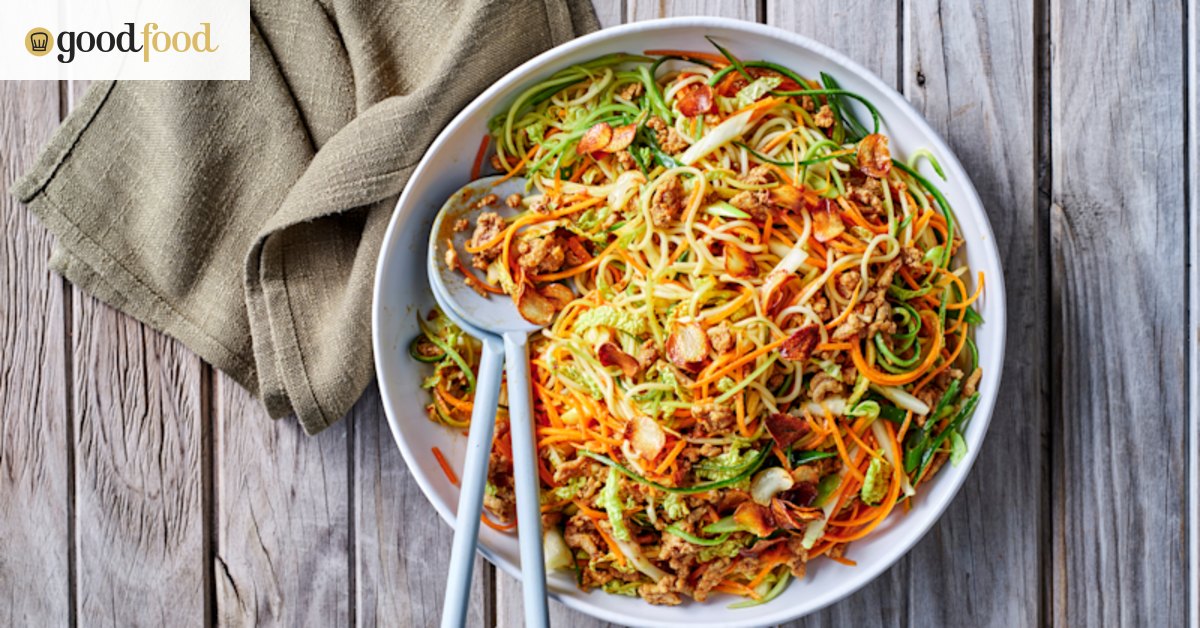You can order them frozen, filthy or with a deli cabinet’s worth of garnishes. But don’t mess with the fundamentals, say bartenders.
You have reached your maximum number of saved items.
Remove items from your saved list to add more.
Save this article for later
Add articles to your saved list and come back to them anytime.
Martinis containing tomato, dill, olive oil and other ingredients you might find in a salad are just some of the new-wave interpretations powering the classic cocktail’s Melbourne renaissance.
The martini, traditionally an ice-cold blend of gin, vermouth and perhaps a dash of bitters, is nearly 150 years old.
It has long been associated with the seriousness of British wartime prime minister Winston Churchill and the old-school glamour of James Bond. But you wouldn’t know it from the throngs of young people at Melbourne bars, clutching V-shaped glasses containing the bartender’s latest signature interpretation.
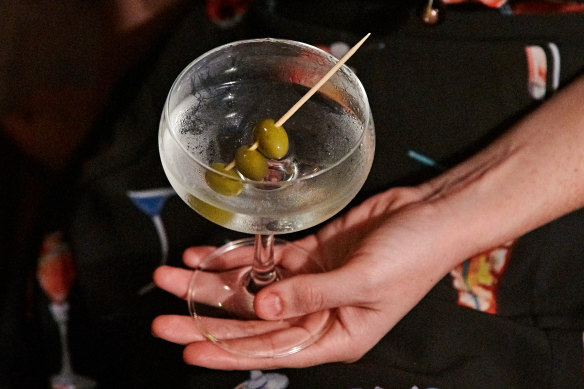
Top-rated bar Caretaker’s Cottage sells between 100 and 200 martinis a day in Melbourne CBD.
Meanwhile, martini orders have jumped 20 per cent in the past year at Nomad Group’s venues, which include swanky Collins Street restaurant Reine & La Rue and subterranean Nomad in Melbourne. The drink is shrinking sales of other classic cocktails, such as the margarita and the negroni.
Leading bottled cocktail maker Everleigh Bottling Co saw a 35 per cent increase in martini-related search queries on its website and 30 cent more martini sales in 2023, prompting the launch of three new martini products.
Premium vodka distillery Grey Goose has even opened a dedicated martini bar at Melbourne’s Crown casino (serving vodkatinis, naturally) and invited legendary bartenders including American Dale DeGroff to create martinis especially for the list.
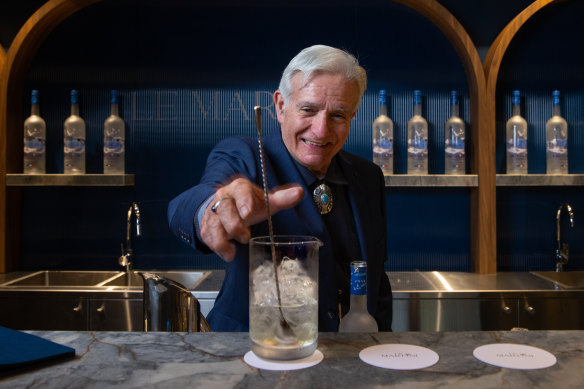
Could the thirst for this notoriously potent drink have something to do with the stresses of the past four years? Or is it a sign of the evolving tastebuds of Australians, who have recently embraced the bitter negroni and the wide world of craft gin?
“I think it’s thanks to the internet,” says bartender Kayla Saito, of The Mulberry Group. Because of bartending videos, she says even those who have never sipped a martini are now familiar with the drink.
For DeGroff, it’s a throwback. “The manhattan and the martini are described in so many different ways in literature and lore. Those two drinks – especially the martini – are almost a culture of their own.”
Whatever the reason, the martini has become a must-order – and a must-have menu item, preferably with a unique twist that can become a bar’s calling card.
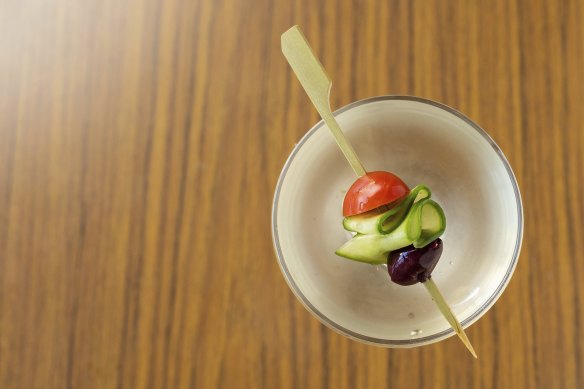
City bar Pearl Diver created its own gin flavoured with oyster shells for its house martini, to remind drinkers to pair oysters with the cocktail. Capers, a Greek bar-restaurant in Thornbury, serves a “Greek salad” martini with cucumber, tomato, olive and a concentrate made from vinegar. It riffs on the widely popular dirty martini, which includes a splash of olive brine. And at Saint George in St Kilda, the house martini comes with pickled onion, an olive and a hunk of parmesan.
Savoury martinis that build on the “dirty” flavour profile are a big trend, says Kayla Saito. She’s also seeing a preference for less boozy martinis (more vermouth, less gin), as well as bars pre-making and freezing martinis so they can serve a perfectly measured, icy drink every time. It’s less theatrical, but much more convenient.
“You don’t have to wait 20 minutes for a martini,” says Saito.
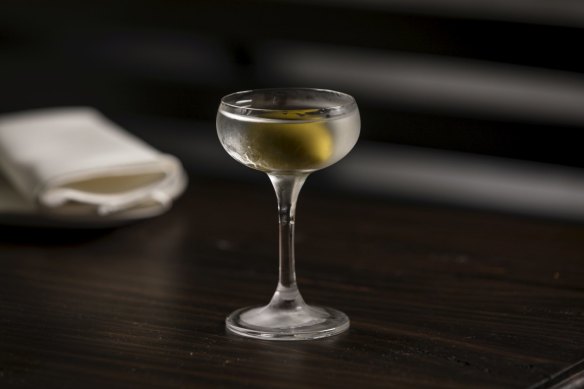
Mini-tinis or mar-tinys – half serves of the boozy drink – are also increasingly common, providing a gateway for younger drinkers unsure whether they’ll like the cocktail.
All that experimentation, plus an explosion in craft gins and vermouths, make ordering a martini a daunting prospect for first-timers. Wet? Dry? With a twist? Perfect (equal parts dry and sweet vermouth)?
The job of a good bartender, says Gin Palace’s Ben Luzz, is to walk you through the process so you can build your ideal martini.
Pearl Diver gives customers a head start with an illustrated menu featuring headings such as “Choose your modifiers: vermouth, liqueur, dots & dashes” and a sliding scale of flavour profiles, from “bone dry” to “half-half” to “filthy”.
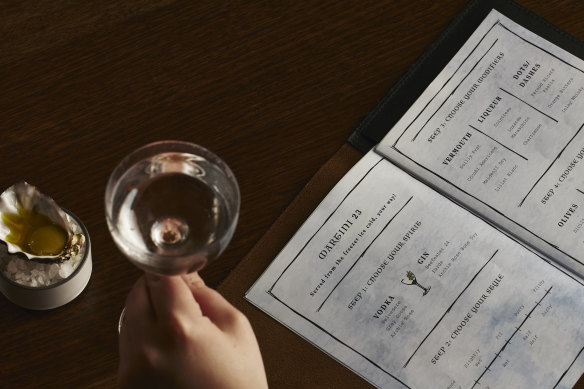
Since introducing the menu eight months ago, co-owner Pez Collier says martini sales have increased to 90 weekly. “That menu opens it up to people who might be less confident ordering a martini,” he says.
How to order a martini
Style?
Wet: more vermouth than usual
Dry: more gin than usual
A standard ratio today, says Gin Palace’s Ben Luzz, is 8 parts gin to 1 part vermouth. Wet would be more like 2 parts gin to 1 part vermouth. First-timers should go with a wetter martini.
Vodka or gin?
If you normally like gin and its herbal, spicy, botanical notes, go for gin. If you prefer a more neutral base spirit, choose vodka.
Shaken or stirred?
While James Bond ordered his martini shaken, many bartenders prefer to stir, because they can control how diluted the drink becomes. But it’s really up to you.
Olive or twist?
There’s now a wide world of garnishes beyond an olive or a twist of lemon zest. Some bartenders use orange, grapefruit, lime or other citrus. Pickled ingredients such as cornichons are common. Bartenders might match the garnish to the style of gin and vermouth used. It’s the drinker’s choice.
Tips for first-timers
- Start with a wet martini: it’ll be less boozy, more aromatic
- Tell the bartender you haven’t drunk many martinis and find them a bit overpowering.
- Ask if they do half-martinis, in case you don’t like it
- Ask for your olives on the side, in case they’re warm
Collier has seen drinkers gravitate to dirty martinis, which they offer with three levels of olive brine: dusty, dirty and filthy. Even those ordering a dry martini (more gin, less vermouth) will ask for olives on the side, he says.
Variations are a key part of the martini’s appeal. It’s evolved from a pale amber drink made with orange curacao and sweet vermouth to a family tree of drinks including the Gibson (served with a pickled onion) and the Vesper (half vodka, half gin), made famous by James Bond.
Martini variations were in the top three of all cocktails ordered through the me&u QR code platform in both 2022 and 2023.
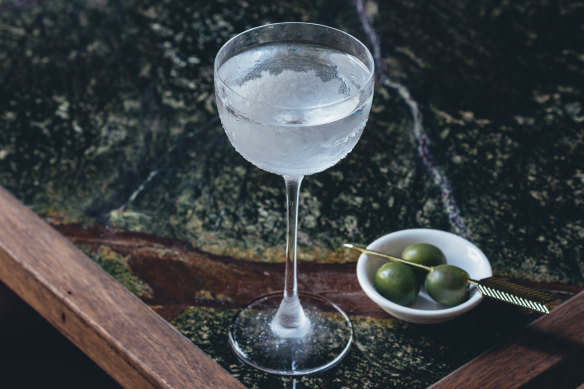
“Back in the old days, you’d have one bottle of Noilly Pratt [vermouth] that would sit on the shelf,” says Luzz. “Now there’s a plethora and they’re so specific to certain martinis … Our staff are able to curate a martini for someone that suits their palate.”
But veteran bartenders have a note of caution to the next generation.
“Your choice of ingredients needs to be curated carefully,” says Dale DeGroff, who worked in leading New York bars in the 1970s and ’80s. “The degree of deliciousness can’t be f—ed with.” Duly noted.
Five signature martinis to try around Melbourne
Big Esso, CBD: Try a Green Ant-tini, showcasing vibrant citrus notes of green ants, a First Nations food that flavours this drink’s gin base ($27).
Caretaker’s Cottage, CBD: By making its own gin blend and vermouth, this bar has a truly individual drink – and it’s poured straight from the freezer ($25).

Etta, Brunswick East: The Melbourne Martini combines house-made vermouth, extra virgin olive oil and an anchovy-stuffed olive with your choice of gin or vodka ($24).
Le Martini, Southbank: Get a liquid history lesson with the Harry’s Original, a pre-Prohibition-style martini created by bartending royalty Dale DeGroff ($32).
Pearl Diver, CBD: The Sea & Shell martini is made with a custom oyster shell gin for a super briny profile ($25).
Restaurant reviews, news and the hottest openings served to your inbox.
You have reached your maximum number of saved items.
Remove items from your saved list to add more.





